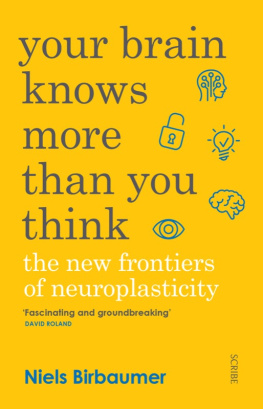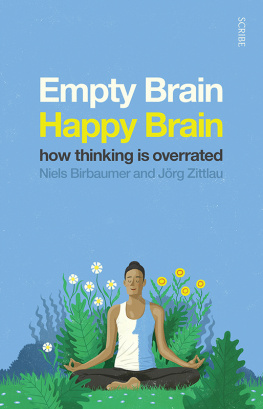Constructing the Colonial Encounter
: Temple car taken in procession by devotees. Painting by unknown Tanjore artist c. 1800. Disputes between right and left hand castes frequently occurred when one of the divisions attempted to take processions through certain disputed streets or displayed disputed symbols of honour. Lances, coloured flags and umbrellas all to be seen in the painting were symbols likely to cause disputes. Oriental and India Office Collections of the British Library (Add. Or. 2534). By permission of the British Library.
Constructing the Colonial Encounter
Right and Left Hand Castes in Early Colonial South India
Niels Brimnes
Constructing the Colonial Encounter:
Right and Left Hand Castes in Early Colonial South India
by Niels Brimnes
Nordic Institute of Asian Studies
Monograph No. 81
First published in 1999
by Curzon Press
Published 2019 by Routledge
2 Park Square, Milton Park, Abingdon, Oxon OX14 4RN
52 Vanderbilt Avenue, New York, NY 10017
Routledge is an imprint of the Taylor & Francis Group, an informa business
Copyright Niels Brimnes 1999
Publication of this book was assisted by a grant from the Danish Research Council for the Humanities
All rights reserved. No part of this book may be reprinted or reproduced or utilised in any form or by any electronic, mechanical, or other means, now known or hereafter invented, including photocopying and recording, or in any information storage or retrieval system, without permission in writing from the publishers.
Notice:
Product or corporate names may be trademarks or registered trademarks, and are used only for identification and explanation without intent to infringe.
Typesetting by the Nordic Institute of Asian Studies
British Library Catalogue in Publication Data
Brimnes, Niels
Constructing the colonial encounter : right and left hand castes in early colonial South India. - (NIAS monographs ; 819)
1.Colonies - Asia - History 2.India - Civilization - history 3.India - Social conditions - History 4.India - History - 1526-1765 - History - British occupation, 1765-1947
I.Title
954.029
ISBN 13: 978-0-7007-1106-2 (hbk)
Contents
Illustrations
1. Temple car taken in procession by devotees
This is a study of European colonialism as well as of South Indian society. In order to make it more accessible to readers without an intimate knowledge of South Indian culture, I have avoided the use of diacritical marks in transliterations of Indian words and adopted the more familiar anglicized spellings of the eighteenth and nineteenth centuries. Indian and Anglo-Indian terms are given in italics and explained in the Glossary attached at the end of the book. I have conformed to the usage found in authoritative colonial texts such as the Madras Regulations rather than using linguistically more correct forms. For geographical names, I have adopted the forms used in W. Hunter, Imperial Gazetteer of India (e.g. Tanjore instead of Thanjavur). Caste names and appellations are generally given in the form used in E. Thurston The Castes and Tribes of Southern India (Chetti instead of Chettiar, Chittee or Setty). Though not italicized, caste names are explained in the List of Caste Names, pp. 260. Personal first names and local geographical designations are given in one form only; usually the most conventional one in the records.
In case of direct transcription of manuscripts, the original text has been reproduced as accurately as possible. To make the reading easier I have in some cases written the shorthand (i.e. abbreviated) words of the manuscripts in full. Quotations from Danish manuscripts are my own translations. All dates are given in the modern style.
The following abbreviations have been used in the notes:
ASK | Asiatisk Kompagnis Arkiv [Archive of the (Danish) Asiatic Company] |
CDR | Chingleput District Records |
EBA | Eidsvoll-bygningens Arkiv [Archive of the Eidsvoll building], Oslo |
GTK | Generaltoldkammerets Arkiv [Archive of the (Danish) Chamber of Customs] |
KK | Kommercekollegiets Arkiv [Archive of the (Danish) Chamber of Commerce] |
MBORP | Madras Board of Revenue Proceedings |
MDR | Madras District Records |
MJP | Madras Judicial Proceedings |
MMP | Madras Military and Political Proceedings |
MPP | Madras Public Proceedings |
MRP | Madras Revenue Proceedings |
OIOC | Oriental and India Office Collections of the British Library, London |
RA | Rigsarkivet [(Danish) National Archives], Copenhagen |
TDR | Tanjore District Records |
TNSA | Tamil Nadu State Archive, Madras |
The present work is the result of a research project which I embarked on in 1992, when I received funding to write a PhD thesis on disputes between right and left hand castes in early colonial South India. Over the last six years I have worked on this subject in England, India and Denmark. I have used several archives and libraries and met a large number of scholars. Everywhere I have encountered helpfulness and encouragement, and I am indebted to many for useful suggestions and critical remarks. Only a few of those, to whom I wish to express my gratitude, can be mentioned here.
A generous three-year grant from the Danish Research Council for the Humanities enabled me to concentrate fully on writing the PhD thesis, which forms the backbone of the present book. Later, the Research Council also provided crucial funding towards the publication of the book. Staff at Oriental and India Office Collections in London, the Tamil Nadu State Archive in Madras and the National Archives in Copenhagen have been friendly and helpful.
C. A. Bayly was an outstanding and generous PhD supervisor at the University of Cambridge. J. Chr. Manniche, of the University of Aarhus, has followed and encouraged my interest in colonial history for many years. While I was in India, Om Prakash, of the University of Delhi, kindly agreed to be my supervisor. In addition I have had rewarding discussions and received encouragement from a number of scholars including Susan Bayly, Mattison Mines, Gene Irschick, David Washbrook and Rosalind OHanlon. I am particularly grateful to Sanjoy Bhattacharya and Sangeeta Chawla for being excellent hosts and for taking part in discussions on so many occasions. In the final stages of this work, Sanjoy also procured necessary bibliographical information for me. I am indebted to Abdul Fakhri or spending precious time to introduce me to the Tamil language and for sharing his knowledge of his native town with me. I should probably have followed more conscientiously the advice which I received; needless to say, I myself remain fully responsible for any shortcomings that might occur in the text.













